This tutorial will take you through analyzing a patient with anemia, what can cause it and what problems it causes for the patient.
You can navigate through this tutorial using the buttons at the top of the screen.
The tutorial will ask you questions. Click on your chosen answer to see feedback; click the answer again to make the feedback disappear. When you're finished with one page, click the navigation button for the next page to move ahead.
Have fun! Click on button '1' to see the first page of the tutorial.
Page 1
Mrs. G is a 37-year-old woman with two children. She is not currently pregnant or nursing. She's come to the doctor with a complaint of being generally 'worn down,' tired and sore all the time, aching bones, and just not able to keep up with her life!
She has normal weight, blood pressure, and temperature. Her heart rate is a little rapid, and so is her respiration rate. She says she gets out of breath a lot. She has never smoked and says she hasn't had any recent respiratory illnesses. Her skin turgor is normal but her skin is pale and slightly yellowish. Her liver is normal but her spleen appears slightly enlarged.
The doctor asks a lot of questions about her family history. She is from a Greek family and some diseases do appear in their history. In particular, her great-aunt had jaundice and her grandmother suffered from bone problems. The causes of these were never diagnosed. Her mother also complained of tiredness after her children were born, and the family understanding was that some women just never 'bounced back.' But her sister is doing just fine, so Mrs. G feels it is unfair that it should hit her.
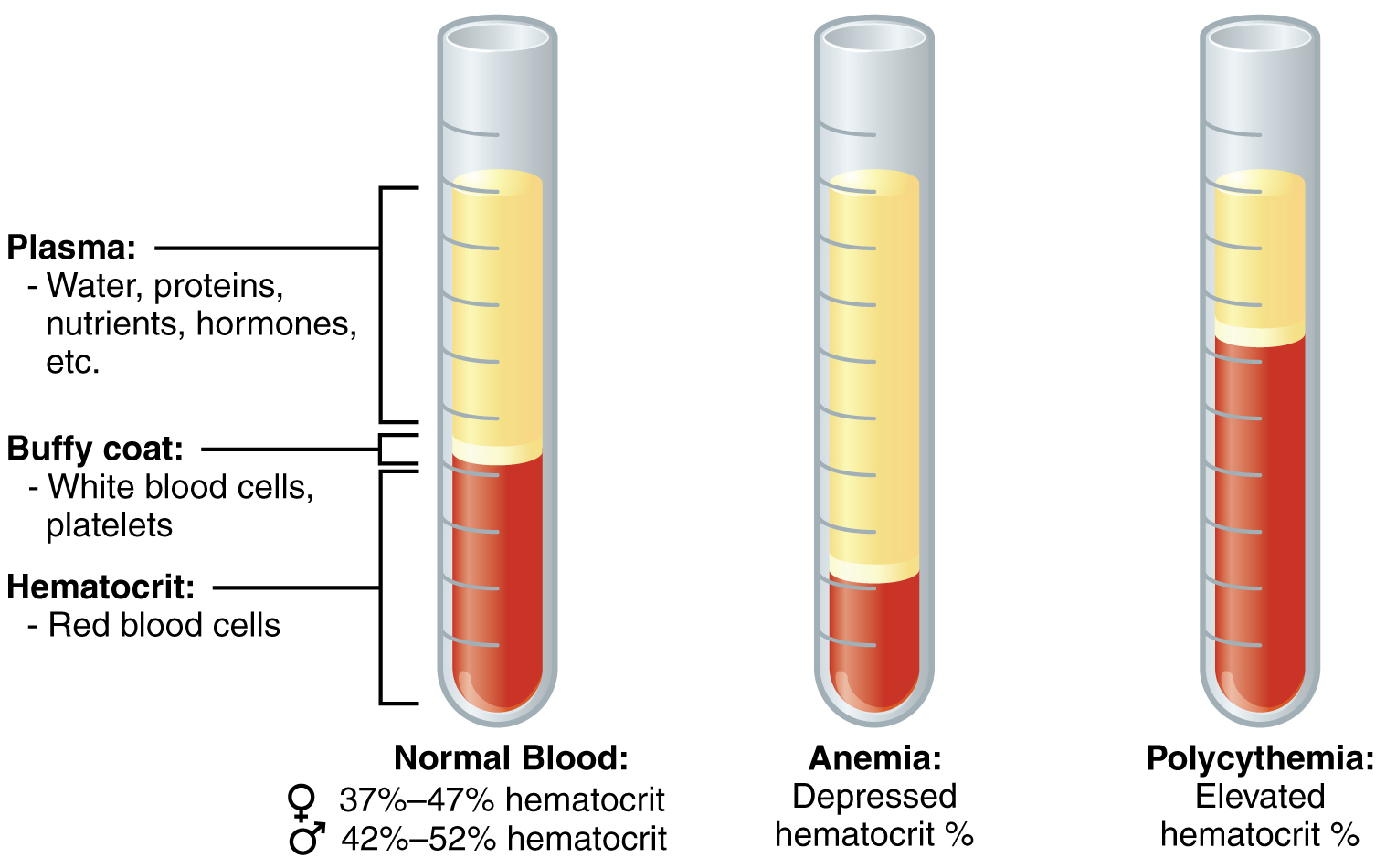
By OpenStax College [CC BY 3.0 (http://creativecommons.org/licenses/by/3.0)], via Wikimedia Commons
anemia
polycythemia
aplastic anemia
The doctor orders a complete blood count, Vit B12, folic acid and ferritin assays, fecal blood test, and bilirubin assay.
Page 2
While we wait for the lab results, let's think about what they could tell us.
Ferritin is an assay for blood iron. If Mrs. G had low ferritin, how could that make her feel weak and miserable?
Low iron would make her inflammatory system turn on
With low iron, her bones will become weaker
Iron is needed to make hemoglobin to carry oxygen around her body
What about fecal blood?
Blood should be removed from the body in the feces, so this test should be positive.
This test would only indicate a large bleed in the colon.
This test could indicate a small blood loss anywhere in the GI tract.
What about bilirubin?
Bilirubin is an early stage in red blood cell production.
Bilirubin is made when red blood cells are broken down.
Page 3
The doctor's tests are checking for three major causes of anemia.
Let's look at the first possibility. Remember how red blood cells are made?
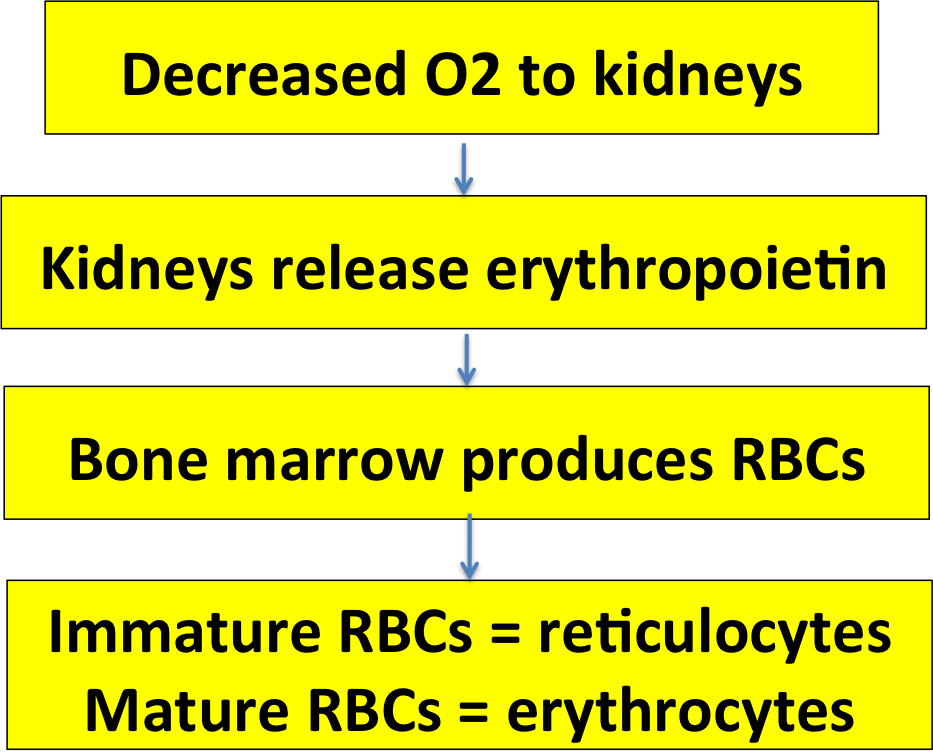
Page 4
Mrs. G's lab results have come back and they show that her ferritin, Vitamin B12, and folic acid are all within normal levels. Her urine is normal, and she doesn't have any blood in her stool or any other sign of bleeding. Her bilirubin level is elevated, however.
The complete blood count shows many small, misshapen red blood cells. Many of them are reticulocytes instead of adult erythrocytes, some of them have lumps inside them, and some still have nuclei.
What does this make you think about the cause of her anemia?
It probably is caused by bone marrow failure to make enough red blood cellsPage 5
The lab tests pretty much ruled out the first two possible causes of her anemia, and gave evidence for the third cause - excessive red blood cell destruction, causing high bilirubin levels.
Page 6
Mrs. G is breaking down her red blood cells too fast. But what could make her do this?
The doctor is concerned about those lumps in the red blood cells. So they run further tests to see just what those lumps are made of.
They turn out to be hemoglobin - but abnormal hemoglobin. Instead of being made of two alpha chains and two beta chains, this is made up of four alpha chains.
What does that signify? Let's look at normal adult hemoglobin. It's made up of four protein chains, each one holding a heme group that holds an iron ion. Two of those four protein chains are identical alpha chains, and two are identical beta chains.
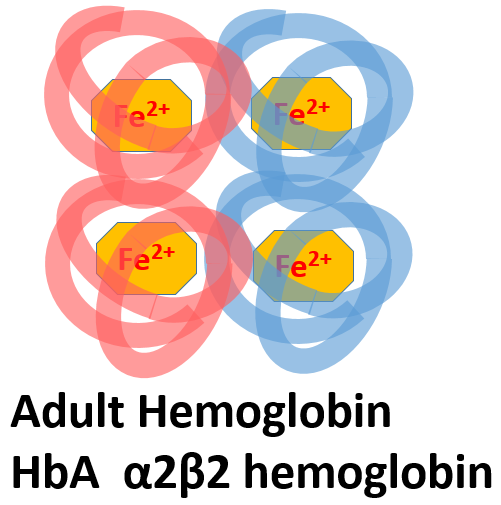
Now let's look at the abnormal hemoglobin from Mrs. G's cells. It only contains alpha chains - four of them.
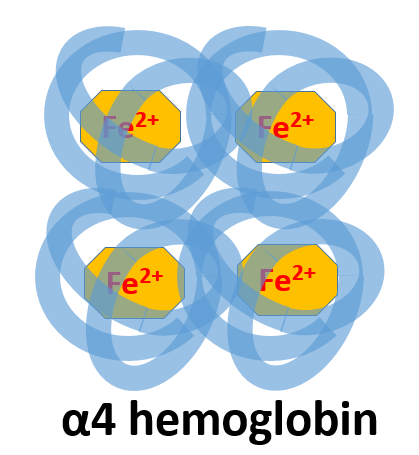
Page 7
Inside the red blood cell, normal hemoglobin disperses evenly. But abnormal hemoglobin often comes together into lumps.
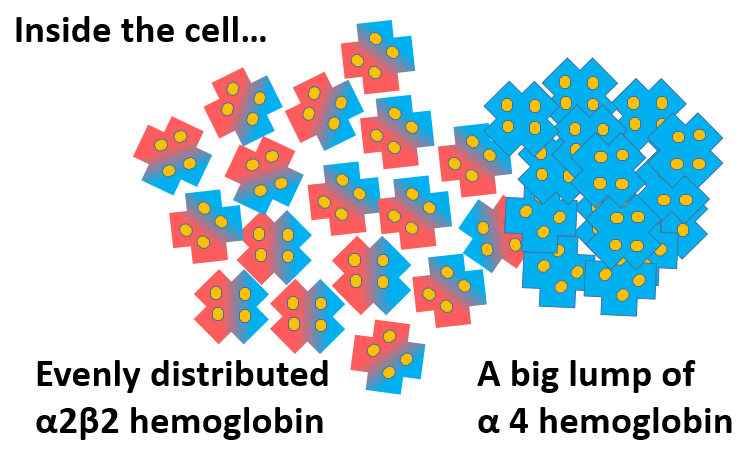
But why would she have this abnormal hemoglobin in the first place?
Page 8
The protein chains in hemoglobin, like all proteins, are coded for by genes. Humans normally have four copies of the gene for alpha chains, and two copies of the gene for beta chains. Therefore, we are able to make both alpha and beta chains, and our hemoglobin molecules have two alpha chains and two beta chains.
This disease is called Beta Thalassemia major or Cooley's anemia. What other terms might you apply to Mrs. G's condition?
Page 9
Mrs. G complained of aching bones. What do you think might cause that problem?
shrinking bone marrow because it can't make enough hemoglobin chains
inflammation from the abnormal red blood cells being destroyed in the bone marrow
The medical students are discussing Mrs. G's case. One student says she will need to have constant transfusions, but another student disagrees.
"That would overload her with iron. We ought to give her erythropoietin instead, then she'll make her own red blood cells."
The third student doesn't like either of those options. "Her problem is with destroying the red blood cells, so we should take her spleen out."
What do you think about these suggestions? Come up with your own judgment about them, and then click on them to check your answers.
You've now finished the tutorial on Mrs. G's inherited hemolytic anemia. What are some complications you would worry about in this patient? How do you think an alpha-thalassemia would be different?
Happy studying!
1 Advani, P. (2017, November 29). Beta Thalassemia Treatment & Management: Approach Considerations, Surgical Treatment, Investigational Therapy.